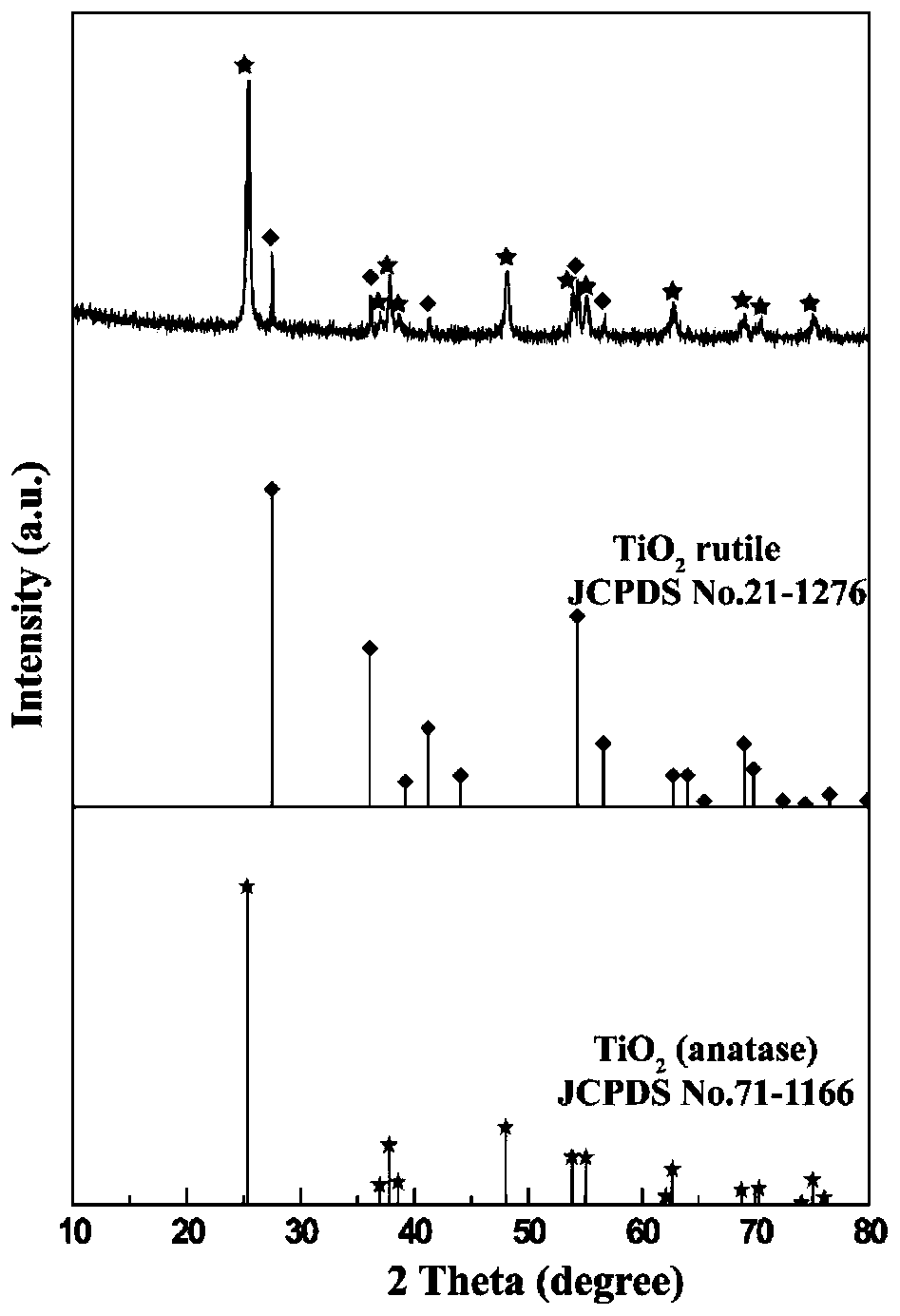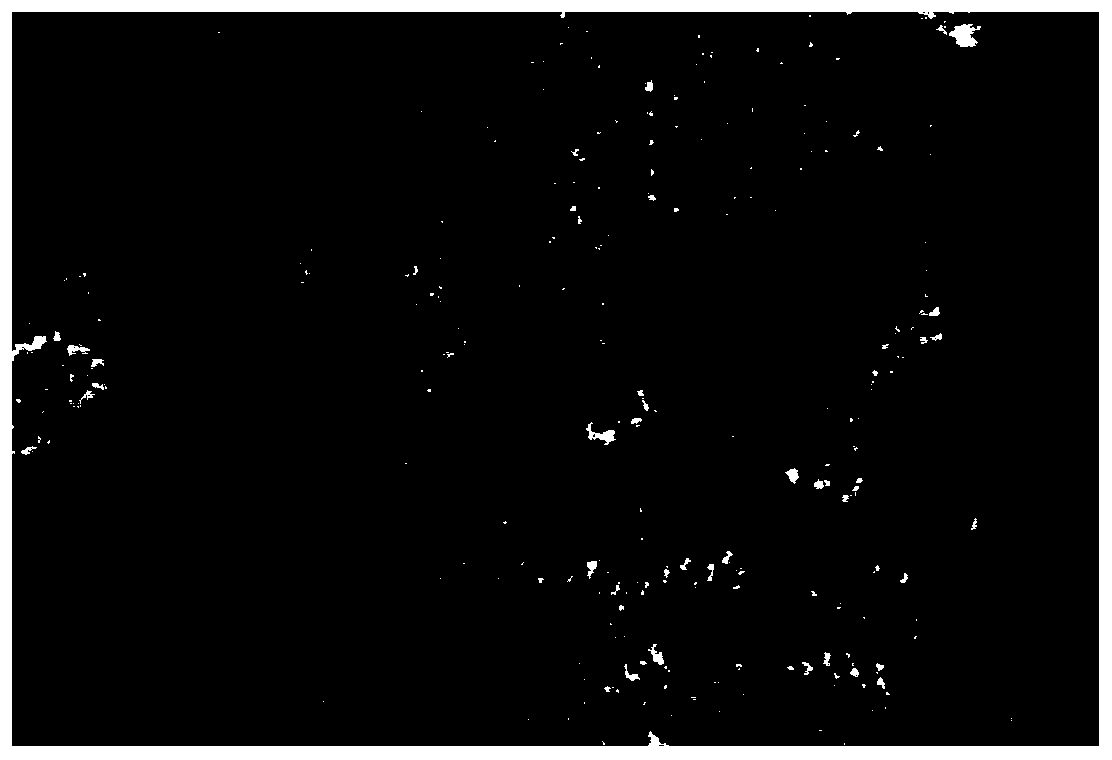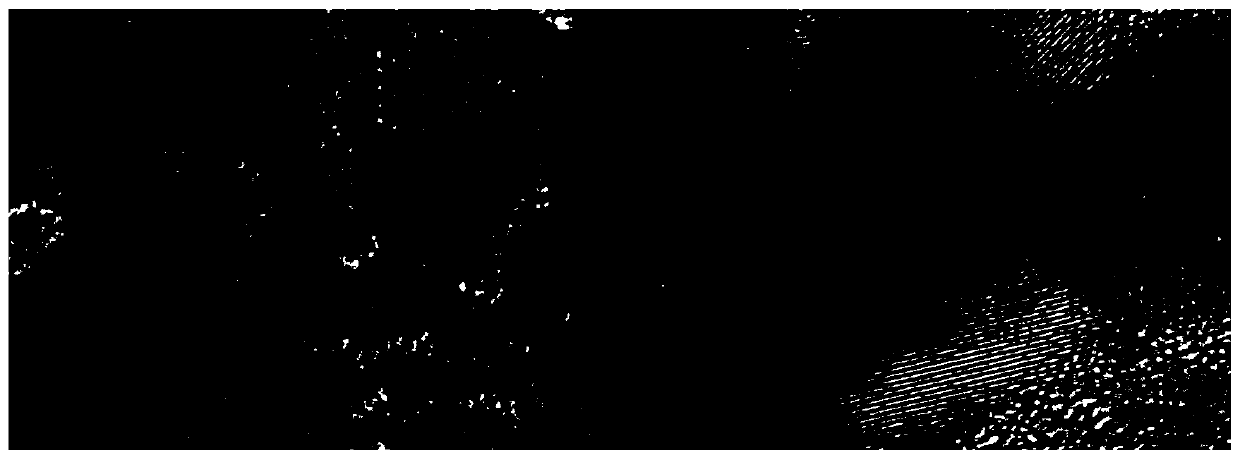An Ag-induced anti-opal tio 2 Preparation method of homojunction photocatalyst
A photocatalyst and anti-opal technology, applied in physical/chemical process catalysts, metal/metal oxide/metal hydroxide catalysts, chemical instruments and methods, etc., can solve the problems of cumbersome steps and irregular sample morphology, etc. Achieve the effects of cheap and easy-to-obtain raw materials, simple and novel preparation process, and enhanced photocatalytic performance
- Summary
- Abstract
- Description
- Claims
- Application Information
AI Technical Summary
Problems solved by technology
Method used
Image
Examples
Embodiment 1
[0017] Example 1: Ag-induced inverse opal TiO 2 The preparation method of the homojunction photocatalyst adopts the following technical scheme:
[0018] Dissolve 13.5mL of styrene and 0.7g of polyvinylpyrrolidone in 100mL of deionized water, stir for 15 minutes, add 0.15g of potassium persulfate and 0.3g of silver nitrate, pass nitrogen gas for 30min to remove the air, then raise the temperature to 70°C for 24 hours. After the reaction, insert a clean glass piece into the aqueous solution containing PS spheres, and place it in a drying oven at 45°C for 4-7 days to evaporate naturally. 10 mL of butyl titanate was dissolved in 10 mL of absolute ethanol, and then 1 mL of nitric acid was added. After stirring for 1 hour, the glass sheet with PS spheres was immersed in butyl titanate solution, and after soaking for 30 minutes, the glass sheet was taken out and dried under natural conditions for 1 hour. The dried glass piece was placed in a tube furnace, raised from room temperatu...
Embodiment 2
[0019] Example 2: Ag-induced inverse opal TiO 2 The preparation method of the homojunction photocatalyst adopts the following technical scheme:
[0020] Dissolve 13.5 mL of styrene and 0.7 g of polyvinylpyrrolidone in 100 mL of deionized water, stir for 15 minutes, add 0.2 g of potassium persulfate and 0.4 g of silver nitrate, pass nitrogen gas for 30 min to remove the air, then raise the temperature to 70°C for 24 hours. After the reaction, insert a clean glass piece into the aqueous solution containing PS spheres, and place it in a drying oven at 45°C for 4-7 days to evaporate naturally. 10 mL of butyl titanate was dissolved in 10 mL of absolute ethanol, and then 1 mL of nitric acid was added. After stirring for 1 hour, the glass sheet with PS spheres was immersed in butyl titanate solution, and after soaking for 30 minutes, the glass sheet was taken out and dried under natural conditions for 1 hour. The dried glass piece was placed in a tube furnace, raised from room temp...
Embodiment 3
[0021] Example 3: Ag-induced inverse opal TiO 2 The preparation method of the homojunction photocatalyst adopts the following technical scheme:
[0022] Dissolve 13.5mL of styrene and 0.7g of polyvinylpyrrolidone in 100mL of deionized water. After stirring for 15 minutes, add 0.3g of potassium persulfate and 0.5g of silver nitrate. After purging the air with nitrogen for 30 minutes, raise the temperature to 70°C for 24 hours. After the reaction, insert a clean glass piece into the aqueous solution containing PS spheres, and place it in a drying oven at 45°C for 4-7 days to evaporate naturally. 10 mL of butyl titanate was dissolved in 10 mL of absolute ethanol, and then 1 mL of nitric acid was added. After stirring for 1 hour, the glass sheet with PS spheres was immersed in butyl titanate solution, and after soaking for 30 minutes, the glass sheet was taken out and dried under natural conditions for 1 hour. The dried glass piece was placed in a tube furnace, raised from room ...
PUM
 Login to View More
Login to View More Abstract
Description
Claims
Application Information
 Login to View More
Login to View More - R&D
- Intellectual Property
- Life Sciences
- Materials
- Tech Scout
- Unparalleled Data Quality
- Higher Quality Content
- 60% Fewer Hallucinations
Browse by: Latest US Patents, China's latest patents, Technical Efficacy Thesaurus, Application Domain, Technology Topic, Popular Technical Reports.
© 2025 PatSnap. All rights reserved.Legal|Privacy policy|Modern Slavery Act Transparency Statement|Sitemap|About US| Contact US: help@patsnap.com



